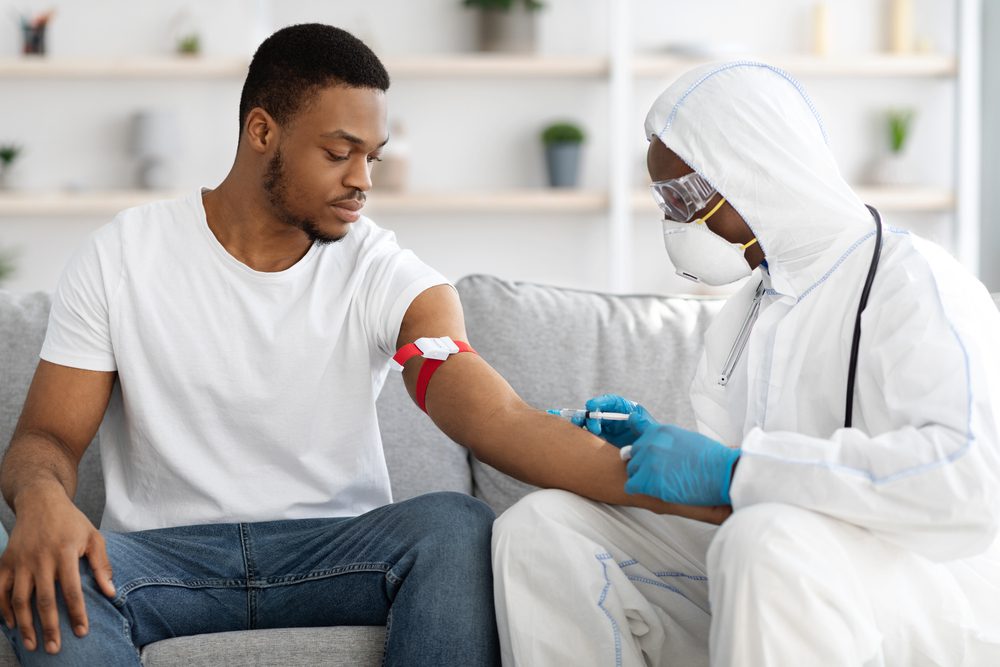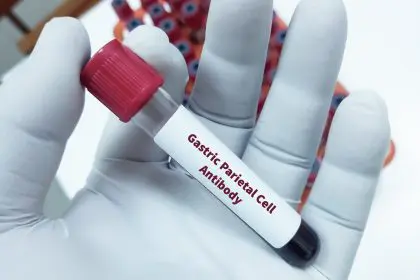COVID-19 continues to evolve, presenting new challenges for early detection as symptoms become increasingly subtle and easily mistaken for other conditions. While most people recognize classic signs like fever, cough, and loss of taste or smell, numerous hidden symptoms often appear days or even weeks before obvious indicators manifest.
These overlooked warning signs frequently masquerade as minor inconveniences or common ailments, leading infected individuals to unknowingly spread the virus while believing they remain healthy. Understanding these subtle symptoms becomes crucial for early detection, prompt treatment, and preventing transmission to vulnerable family members and community contacts.
The virus affects multiple body systems simultaneously, creating a constellation of seemingly unrelated symptoms that may not immediately suggest COVID infection. Recognizing these hidden patterns empowers individuals to seek testing and appropriate care before symptoms worsen or complications develop.
1. Persistent fatigue that rest cannot relieve
Unexplained exhaustion that persists despite adequate sleep often represents one of the earliest COVID symptoms, appearing days before respiratory symptoms develop. This fatigue differs significantly from typical tiredness, creating a bone-deep weariness that interferes with normal daily activities and doesn’t improve with rest or caffeine.
The overwhelming nature of COVID-related fatigue can make simple tasks like showering, preparing meals, or concentrating on work feel impossibly difficult. Unlike normal tiredness that improves with sleep, this exhaustion may worsen throughout the day and persist for weeks even after other symptoms resolve.
Energy levels may fluctuate unpredictably, with periods of feeling relatively normal followed by sudden crashes that leave individuals feeling completely drained. These energy fluctuations can occur multiple times throughout the day, making it difficult to maintain consistent schedules or commitments.
Mental fatigue accompanies physical exhaustion, creating difficulty with concentration, memory, and decision-making that extends far beyond typical tiredness. This cognitive impact can affect work performance, driving ability, and other activities requiring mental alertness, often prompting individuals to seek medical evaluation for what they assume are unrelated issues.
Sleep patterns may become disrupted despite feeling exhausted, with some individuals experiencing difficulty falling asleep or staying asleep throughout the night. This sleep disruption can worsen fatigue symptoms and delay recognition that the exhaustion stems from viral infection rather than sleep disorders.
2. Digestive disruption without obvious cause
Gastrointestinal symptoms frequently precede respiratory signs in COVID infections, presenting as nausea, diarrhea, vomiting, or abdominal pain that individuals often attribute to food poisoning or stomach viruses. These digestive symptoms can appear suddenly and may be the only indication of infection for several days.
Loss of appetite beyond normal illness-related food aversion can signal COVID infection, particularly when accompanied by changes in taste or smell that make previously enjoyed foods seem unappetizing or strange. This appetite loss may persist even when other symptoms remain mild or absent.
Stomach pain or cramping may occur in waves, sometimes accompanied by bloating or changes in bowel movements that seem unrelated to dietary changes or stress. These abdominal symptoms can be particularly confusing when they occur without fever or respiratory symptoms.
Acid reflux or heartburn may develop or worsen during COVID infection, even in individuals who don’t typically experience digestive issues. This symptom often gets attributed to stress, dietary changes, or medication side effects rather than viral infection.
Nausea may come and go throughout the day, sometimes triggered by specific smells or foods, creating patterns that resemble motion sickness or pregnancy-related morning sickness. This intermittent nausea can be particularly misleading when it occurs without vomiting or other obvious signs of illness.
3. Skin changes and unusual rashes appear
COVID-related skin symptoms range from subtle changes in skin texture to distinct rashes that can appear anywhere on the body. These dermatological manifestations often develop independently of respiratory symptoms and may be the only visible sign of infection for extended periods.
Red, itchy rashes may appear on the fingers and toes, sometimes called “COVID toes,” creating swelling, discoloration, and tenderness that can be mistaken for chilblains or other cold-related skin conditions. These toe symptoms can persist for weeks and may develop even in warm weather.
Hives or raised, itchy bumps can appear suddenly on various parts of the body, sometimes migrating from one area to another over the course of hours or days. These allergic-type reactions may be attributed to new foods, laundry detergents, or environmental allergens rather than viral infection.
Skin sensitivity or tenderness may develop without visible changes, creating discomfort when clothing touches certain areas or when applying normal skincare products. This heightened sensitivity can affect sleep and daily activities while remaining invisible to others.
Small, blister-like lesions may appear on the hands or feet, sometimes accompanied by burning or tingling sensations that can be mistaken for contact dermatitis or other skin conditions. These lesions may come and go over several weeks, making the connection to COVID infection less obvious.
Unusual skin dryness or changes in skin texture may occur, with some individuals noticing that their skin feels different or requires more moisturizing than usual. These subtle changes often get attributed to weather, aging, or product changes rather than viral infection.
4. Neurological symptoms create confusion
Brain fog represents one of the most common yet overlooked COVID symptoms, manifesting as difficulty concentrating, memory problems, and mental cloudiness that can persist long after other symptoms resolve. This cognitive impairment often gets attributed to stress, lack of sleep, or normal aging rather than viral infection.
Headaches associated with COVID may differ from typical headaches, often described as pressure-like sensations or unusual patterns of pain that don’t respond well to standard headache medications. These headaches may persist for days or weeks and can be accompanied by light or sound sensitivity.
Dizziness or balance problems may develop suddenly, creating unsteadiness when walking or standing that can be mistaken for inner ear problems or blood pressure issues. This dizziness may come and go unpredictably, making it difficult to identify patterns or triggers.
Sleep disturbances beyond typical illness-related rest needs can indicate COVID infection, including vivid dreams, night sweats unrelated to fever, or changes in sleep architecture that leave individuals feeling unrefreshed despite adequate sleep duration.
Mood changes or emotional instability may occur as part of COVID’s neurological effects, creating anxiety, depression, or irritability that seems disproportionate to the situation. These emotional symptoms often get attributed to stress or life circumstances rather than viral infection.
Tingling or numbness in the hands, feet, or face may develop during COVID infection, sometimes accompanied by weakness or changes in sensation that can be mistaken for circulation problems or nerve compression from sleeping positions.
5. Eye and vision changes signal infection
Eye-related COVID symptoms often appear early in infection and may be the only indication of viral presence for extended periods. These ocular manifestations range from subtle irritation to significant vision changes that can be easily attributed to allergies, dry eyes, or computer strain.
Red, watery eyes that resemble conjunctivitis or allergic reactions may develop suddenly, often accompanied by burning or itching sensations that can be mistaken for environmental irritants or seasonal allergies. This eye redness may affect one or both eyes and can persist for days or weeks.
Changes in vision clarity, including blurred vision or difficulty focusing, may occur during COVID infection and can be particularly concerning when they develop suddenly. These vision changes may fluctuate throughout the day and can affect both near and distance vision.
Light sensitivity beyond normal bright-light discomfort may develop, making it difficult to be outdoors during daylight hours or work under normal indoor lighting. This photophobia can be accompanied by headaches and may worsen with screen time or fluorescent lighting.
Dry eyes or changes in tear production may create discomfort, burning sensations, or the feeling that something is stuck in the eyes. These symptoms can be particularly troublesome for contact lens wearers and may persist long after other COVID symptoms resolve.
Eye pain or pressure behind the eyes may occur without visible changes to the eye appearance, creating deep, aching sensations that can be mistaken for sinus pressure or tension headaches. This pain may worsen with eye movement or looking in certain directions.
Double vision or other visual disturbances may develop in more severe cases, creating seeing problems that require immediate medical attention. These vision changes can be temporary or persistent and may indicate more serious neurological involvement.
Recognizing patterns and seeking care
The combination of multiple subtle symptoms often provides stronger evidence of COVID infection than individual symptoms alone. Paying attention to clusters of seemingly unrelated symptoms that develop within similar timeframes can help identify potential infections before obvious symptoms appear.
Symptom tracking through written logs or smartphone apps can help identify patterns and changes that might otherwise be forgotten or dismissed. Recording daily symptoms, energy levels, and any unusual sensations creates valuable information for healthcare providers evaluating potential COVID infections.
Home testing becomes particularly important when subtle symptoms appear, as many rapid tests can detect infection even before obvious symptoms develop. Regular testing during periods of unusual symptoms can catch infections early when treatment options may be most effective.
Healthcare consultation should be considered whenever multiple unusual symptoms appear simultaneously, particularly when they persist beyond typical minor illness duration or worsen over time. Early medical evaluation can prevent complications and guide appropriate treatment decisions.
Isolation precautions become crucial when any combination of these hidden symptoms appears, as infected individuals may unknowingly spread the virus while feeling relatively well. Protecting family members and community contacts requires assuming potential infectivity whenever unusual symptoms develop.
Long-term implications of missed symptoms
Unrecognized COVID infections can lead to long-term complications that might be prevented with early detection and appropriate care. These complications can affect multiple body systems and may persist for months or years after the initial infection resolves.
Delayed treatment opportunities may be missed when symptoms go unrecognized, potentially allowing the infection to progress to more severe stages before intervention occurs. Early antiviral treatments and supportive care are most effective when started soon after symptom onset.
Transmission prevention becomes impossible when individuals don’t recognize they’re infected, leading to inadvertent spread to family members, coworkers, and community contacts who might be at higher risk for severe outcomes.
Understanding these hidden symptoms empowers individuals to make informed decisions about testing, isolation, and medical care that can protect both personal health and community wellbeing. Recognition of subtle warning signs represents a crucial tool in ongoing efforts to manage COVID-19’s continuing impact on public health.

















